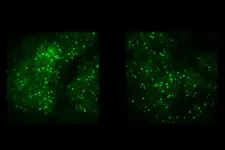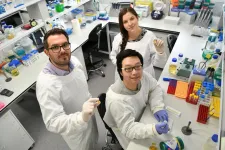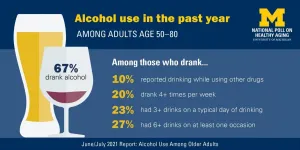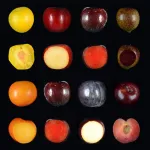(Press-News.org) To focus on what's new, we disregard what's not. A new study by researchers at MIT's Picower Institute for Learning and Memory substantially advances understanding of how a mammalian brain enables this "visual recognition memory."
Dismissing the things in a scene that have proven to be of no consequence is an essential function because it allows animals and people to quickly recognize the new things that need to be assessed, said Mark Bear, Picower Professor in the Department of Brain and Cognitive Sciences and senior author of the study in the Journal of Neuroscience.
"Everyone's appropriate behavioral response to an unexpected stimulus is to devote attentional resources to that," Bear said. "Maybe it means danger. Maybe it means food. But if you learn that this once-novel stimulus isn't anything of significance, it is super adaptive to no longer pay attention to it. It's absolutely essential for normal brain function that we're able to make a quick determination of whether a stimulus is novel or not."
People with schizophrenia and some autism spectrum disorders appear to struggle with this capability, Bear noted.
In 2006 Bear's lab discovered the first sign of visual recognition memory. Researchers detected a strong pattern of increasing electrical activity in the visual cortex as mice became familiar with an image on a screen. Subsequent research showed that this increase in electrophysiological response, dubbed SRP, or "stimulus selective response plasticity," correlated strongly with "habituation," or the behavioral loss of interest in exploring the increasingly familiar stimulus.
Since then, the lab has been working in mice to understand exactly how these phenomena emerge. Their research has shown that a well-known mechanism of learning and memory called "LTP," a strengthening of neural connections amid frequent activity, is involved but that this mechanism alone cannot produce visual recognition memory. Inhibitory neurons called parvalbumin (PV) expressing neurons also appear to be crucial parts of the circuit. PV neurons are known to produce high frequency gamma rhythms in the cortex.
In the new study led by graduate students Dustin Hayden and Daniel Montgomery, Bear's lab shows that as novel visual patterns become familiar, the transition is marked by stark changes in the visual cortex. Gamma rhythms give way to lower frequency beta rhythms and the activity of PV neurons dies out in favor of a rise in activity by inhibitory somatostatin (SOM) expressing neurons.
The study, Bear said, therefore provides an externally measurable indicator of the transition from novel to familiar - the brain rhythm shift. It also offers a new hypothesis for how visual recognition memory is enforced: PV activity, which initially inhibits the SRP electrical response, eventually itself becomes inhibited by SOM activity.
Bear's lab is working with Boston Children's Hospital researcher Chuck Nelson to determine if aberrations in SRP, such as this frequency transition, can be used as an early biomarker of autism spectrum disorders.
Same old scene
In the new study, the researchers showed mice the same simple image repeatedly over the course of several days. All the while they measured the SRP electrical response in the mice as well as neural rhythms. In parallel experiments, they engineered some mice so that their PV or SOM neurons would flash brightly when active. Then as mice watched the image, the scientists could watch for those flashes using a "two-photon" microscope.
On day one, when the image was novel, the spectrum of rhythms in the visual cortex was dominated by higher frequency gamma readings. As the days went on, gamma power diminished, replaced by a steady increase in low frequency beta power. To ensure this wasn't an unrelated transition, on day seven the scientists presented a new image and the familiar one. When the mice saw the new one, they again exhibited a gamma frequency dominated pattern. When they saw the same old original image, the visual cortex reproduced the pattern of increased beta power.
In a subsequent data analysis, the researchers found that the decline in gamma power and increase in beta power correlated significantly with the SRP growth of electrical activity, suggesting that they are indeed linked.
"These data are compatible with the hypothesis that the same underlying biology is responsible for both manifestations of SRP," the researchers wrote.
The two-photon microscope experiments revealed that underlying biology difference. PV neurons responded strongly to images when they were novel but that activity became replaced by increasing SOM activity over several days as the image became familiar.
SOM neurons are believed to suppress PV neurons, Bear said, but to prove that SOM inhibition of PV accounts for visual recognition memory, the lab still needs to perform more experiments. Using optogenetics, in which they can engineer neurons to be controlled with different colors of light, they can manipulate SOM neurons to see if turning them off causes mice to regard repeated images as forever new, or turning them on causes mice to immediately dismiss novel images as passe.
INFORMATION:
Sam Cooke, a former member of the Bear lab who is now a senior lecturer at Kings College London is a co-author of the study.
The National Eye Institute, The JPB Foundation and the National Science Foundation provided funding for the study.
For the first time, Australian scientists have confirmed a link between the role of regular fish oil to break down the ability of 'superbugs' to become resistant to antibiotics.
The discovery, led by Flinders University and just published in international journal mBio, found that the antimicrobial powers of fish oil fatty acids could prove a simple and safe dietary supplement for people to take with antibiotics to make their fight against infection more effective.
"Importantly, our studies indicate that a major antibiotic resistance mechanism in cells can be negatively impacted by the uptake of omega-3 dietary lipids," says microbiologist Dr Bart Eijkelkamp, who leads the Bacterial Host Adaptation Research Lab at ...
As many older adults get back to normal life across the United States thanks to high rates of vaccination and lower COVID-19 activity, a new poll suggests many should watch their alcohol intake.
In all, 23% of adults over 50 who drink alcohol reported that they routinely had three or more drinks in one sitting, according to END ...
DALLAS, June 9, 2021 -- Many adults with a history of cardiovascular disease (CVD) continue to smoke cigarettes and/or use other tobacco products, despite knowing it increases their risk of having another cardiovascular event, according to new research published today in the Journal of the American Heart Association, an open access journal of the American Heart Association.
To understand how many adults with CVD continue to use tobacco products, investigators reviewed survey responses from the large, national Population Assessment of Tobacco and Health Study (PATH) to compare tobacco use rates over time. The participants of the current study included 2,615 adults (ages 18 or older) with a self-reported history of heart attack, heart failure, stroke or other heart disease, ...
The field of ultrafast nonlinear photonics has now become the focus of numerous studies, as it enables a host of applications in advanced on-chip spectroscopy and information processing. The latter in particular requires a strongly intensity-dependent optical refractive index that can modulate optical pulses faster than even picosecond timescales and on sub-millimeter scales suitable for integrated photonics.
Despite the tremendous progress made in this field, there is currently no platform providing such features for the ultraviolet (UV) spectral range, which is where broadband spectra generated by nonlinear modulation can be used for new on-chip ultrafast chemical and biochemical spectroscopy devices.
Now, an ...
An international group of collaborators, including scientists from NASA's Jet Propulsion Laboratory and The University of New Mexico, have discovered a new, temperate sub-Neptune sized exoplanet with a 24-day orbital period orbiting a nearby M dwarf star. The recent discovery offers exciting research opportunities thanks to the planet's substantial atmosphere, small star, and how fast the system is moving away from the Earth.
The research, titled TOI-1231 b: A Temperate, Neptune-Sized Planet Transiting the Nearby M3 Dwarf NLTT 24399, will be published in a future issue of The Astronomical Journal. The exoplanet, TOI-1231 b, was detected ...
The presence and accumulation of the antioxidant pigment anthocyanin dictates fruit hue in plums, and the synthesis of this compound is known to be regulated by the MYB10 genes. Now, researchers from the Centre for Research in Agricultural Genomics (CRAG) and the Institute of Agrifood Research and Technology (IRTA) have found the gene that determines Japanese plum skin colour. In a END ...
New research by scientists at Oxford Brookes University has identified specific genes which could provide vital information about the biology of developmental coordination disorder (DCD), also known as dyspraxia. Dyspraxia is a common motor coordination condition which is estimated to affect at least one child in every classroom.
DCD can impact a child's handwriting and coordination skills such as tying a shoelace or catching a ball. The condition can limit school achievement, impact cognitive development, constrain career opportunities and increase children's risk of developing mental health issues.
Despite the condition affecting five per cent of children, as common as dyslexia or autism, very little is known about why some children struggle ...
Therapy based on the Nintendo® Wii Balance Board can help improve balance in children with cerebral palsy, according to an analysis published in END ...
Advanced age is often considered a contraindication for heart transplantation, but a new study published in the END ...
It all started, when Patrice Cani, FNRS researcher at University of Louvain (UCLouvain), and his team repeatedly observed that a bacterium (called Subdoligranulum) is almost absent in obese and diabetic people, while it is systematically present in healthy people. So, they decided to take a closer look at this "family" of bacteria.
There is as yet only one cultivated strain of this family available in the world (the only known member of a large family) and, no luck, it is not the strain that was observed to be decreased in sick people. This is not unusual: nearly 70% of bacteria in the intestine have not yet been identified (this is called the dark matter of the ...




